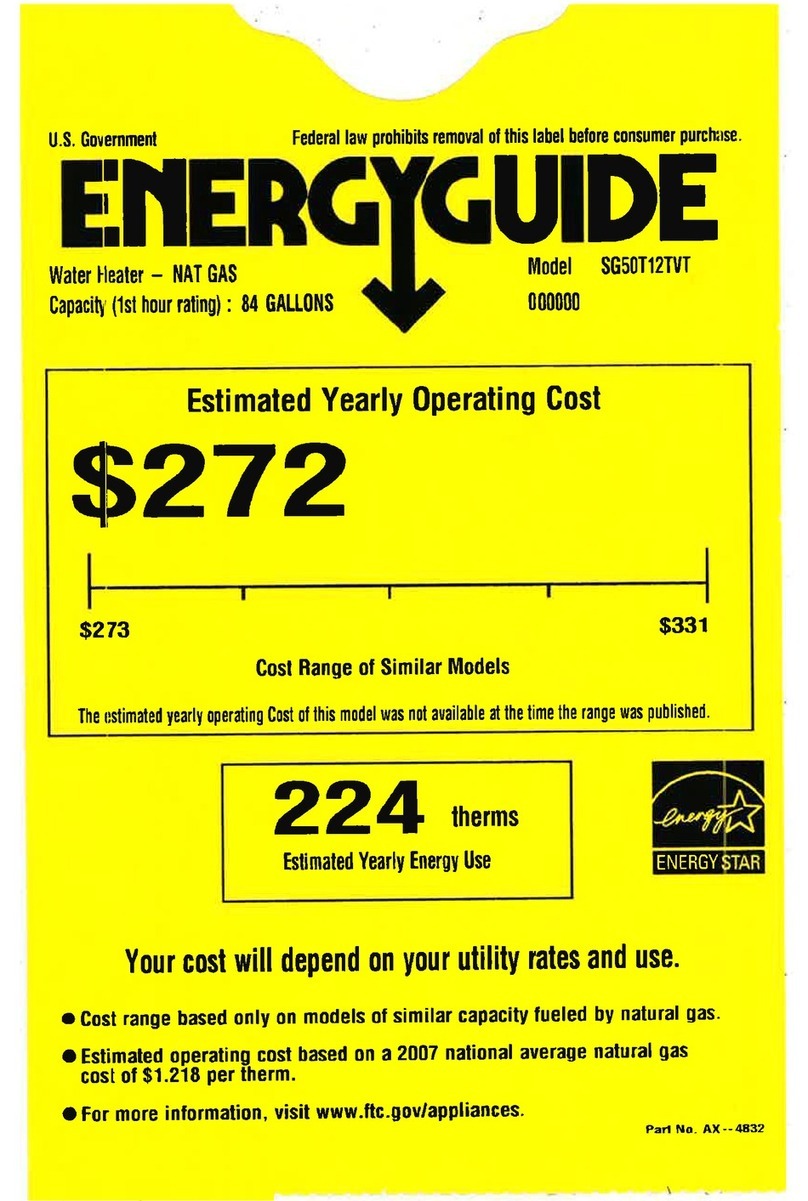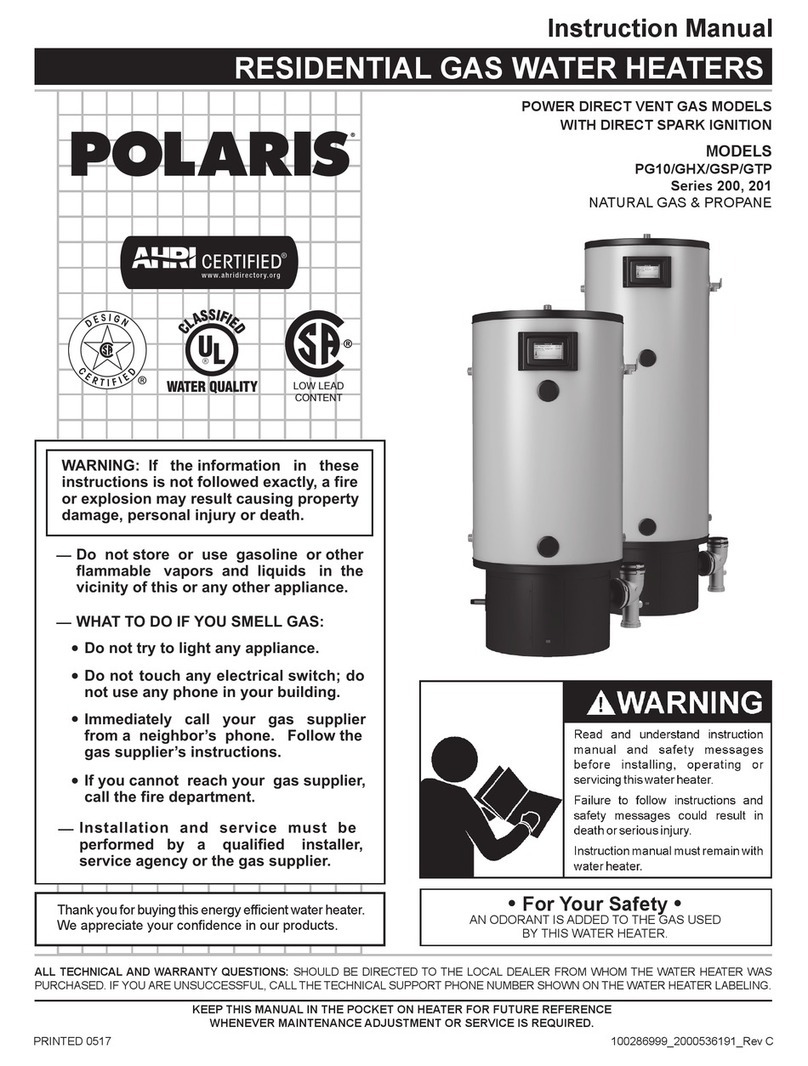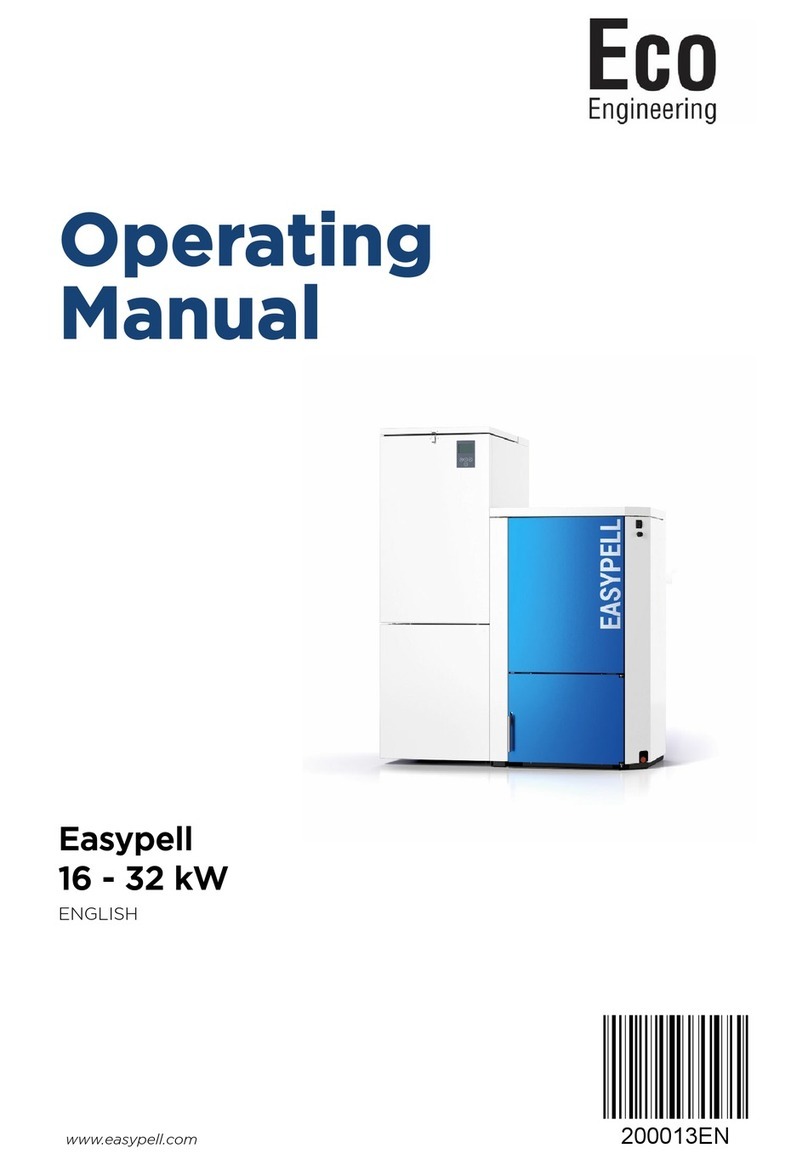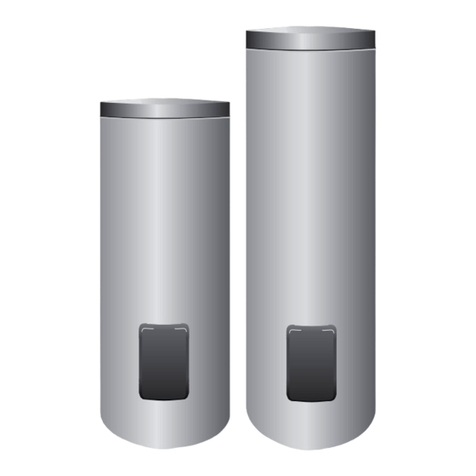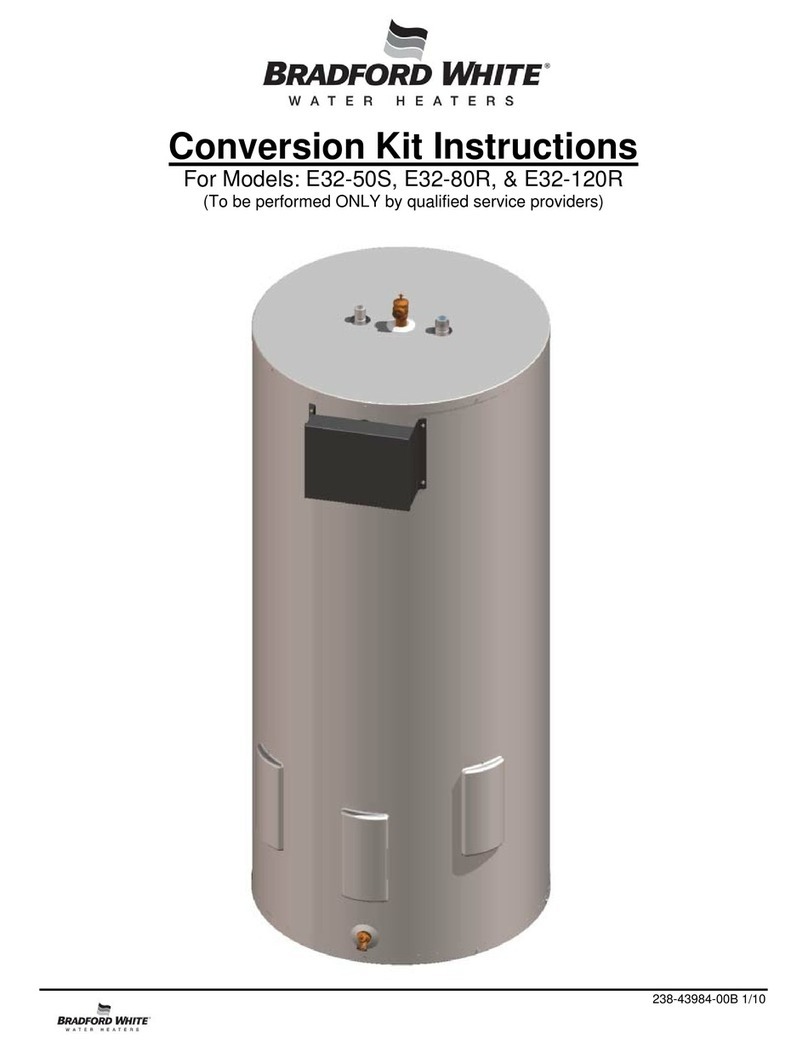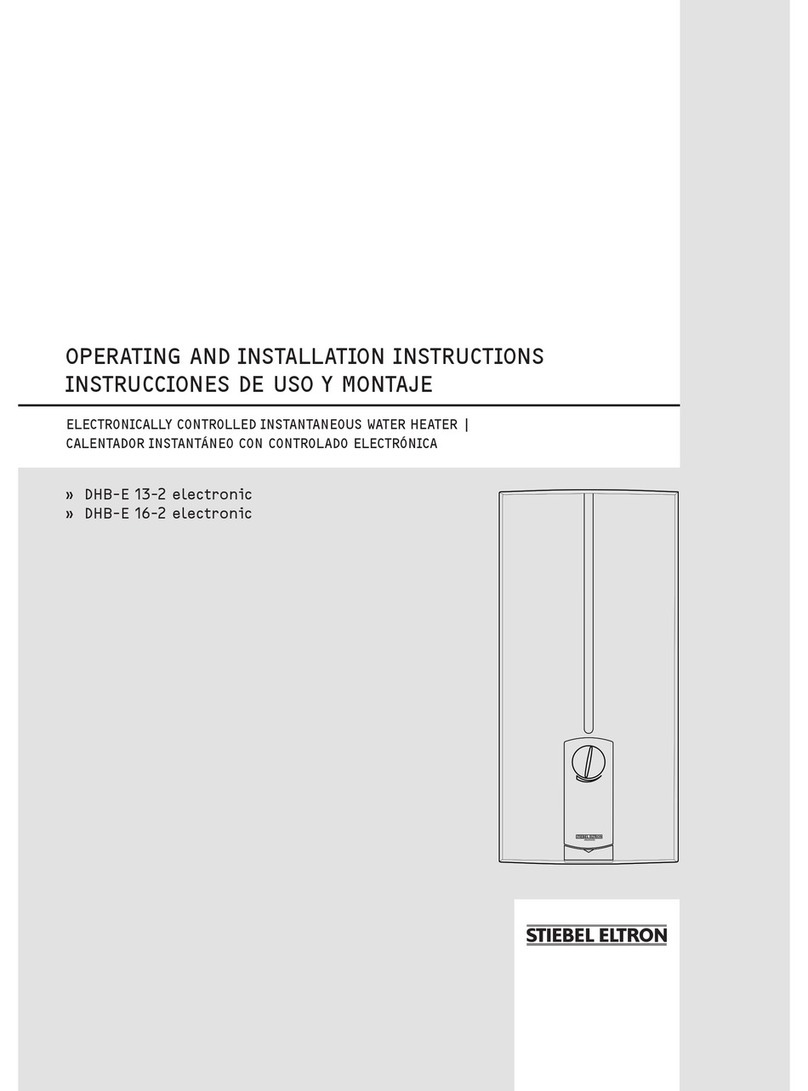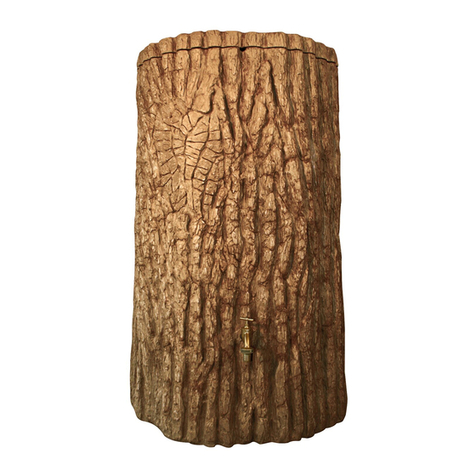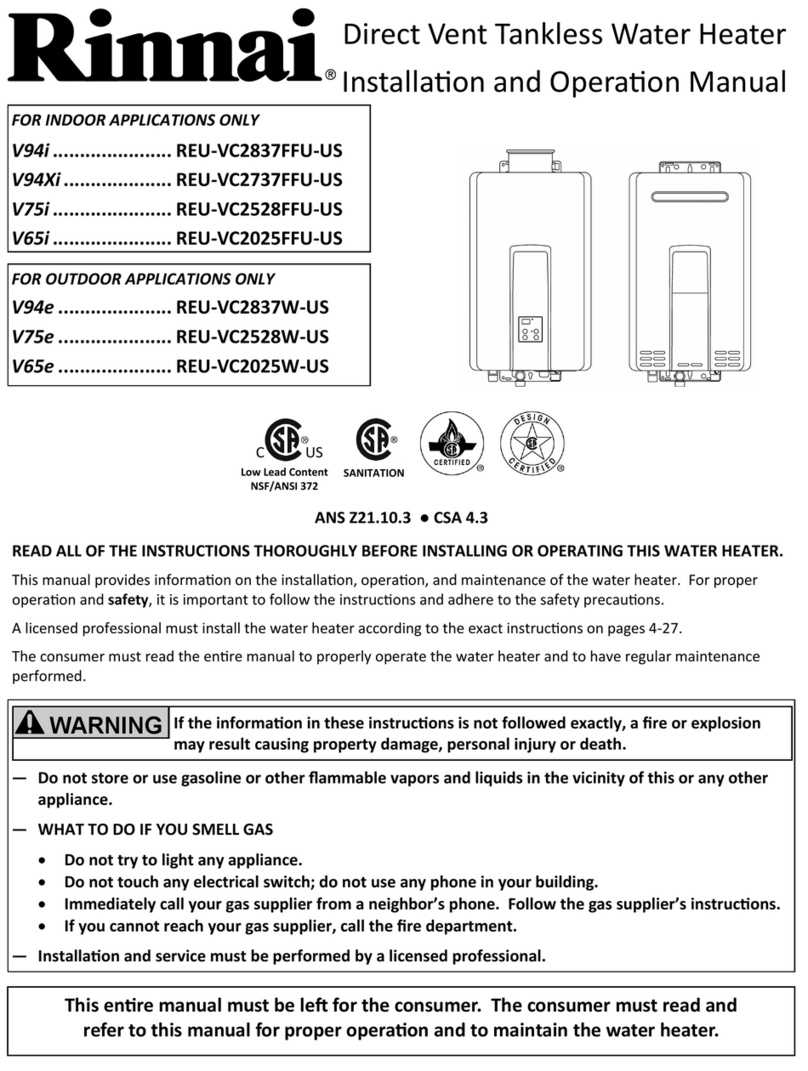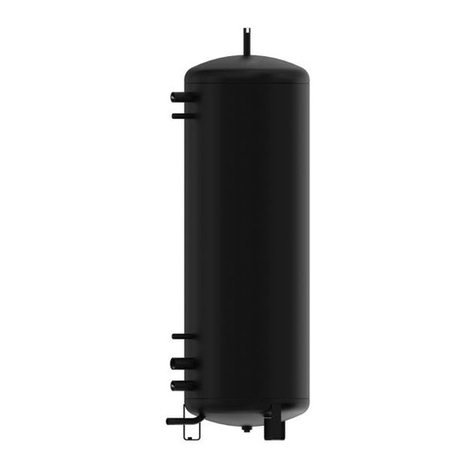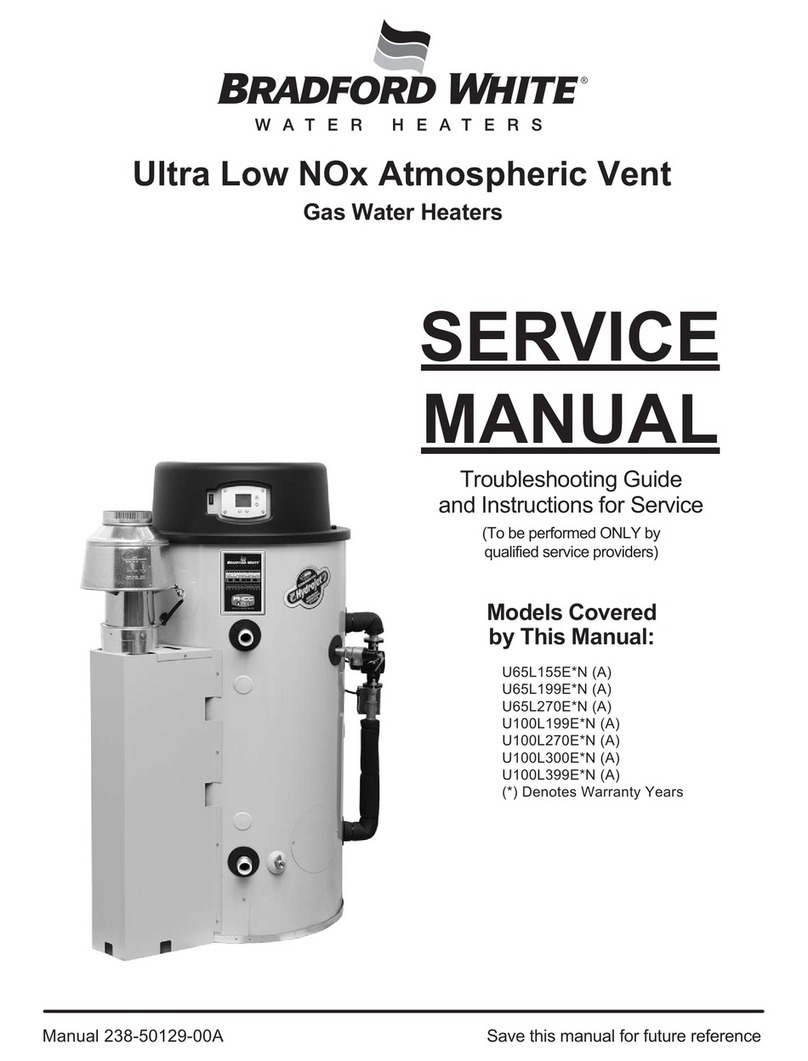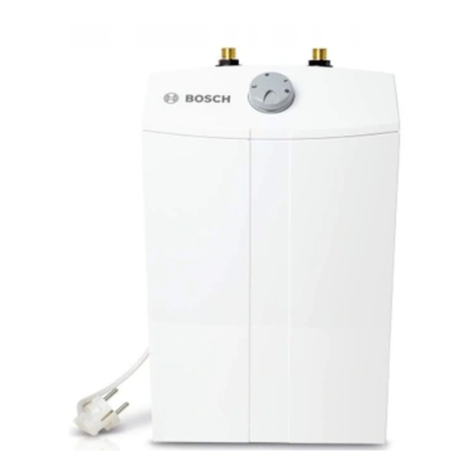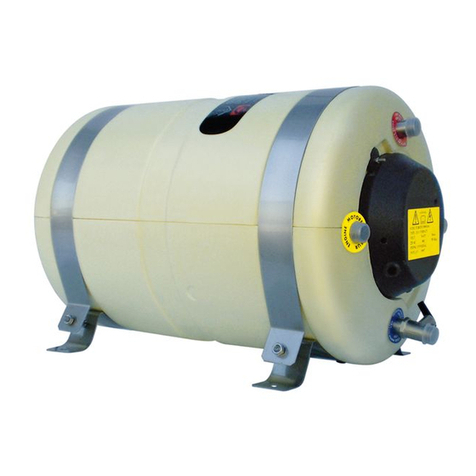
Pag.14/63
PROBLEMS AND SOLUTIONS
IMPORTANT: BEFORE REMOVING THE BLACK PLASTIC CAP PROTECTING ELECTRIC
PARTS, BE SURE TO TURN OFF ELECTRIC CURRENT TO WATER HEATER.
I. WHEN THE ENGINE DOES NOT HEAT THE WATER:
A. Ensure that there are no air locks inside the entry pipe to the water heater’s coil. If any, unloosen
escape valve (if mounted see plumbing connection diagram, point 5) or heat exchanger’s pipe fitting
(marked with red rubber washer see plumbing connection diagram, point 4) and let out any air.
B. Check that temperature of the coolant inside the water heater coil is over 50°C ant that it circulates
properly.
C. Control that hot water taps are watertight.
II. WHEN ELECTRIC HEATING ELEMENT DOES NOT HEAT WATER:
A. Check the electric supply (that you are receiving power) and that the AC supply voltage corresponds
to that indicated on the electric heating element.
B. Check that the thermostat is working correctly (that it switches on /off).
C. Check whether the thermostat’s high temperature cut-out safety has been inserted (see electrical
connection instructions above). If the pin of the cut-out safety device has been released, restore
contact by pushing the pin back to its original position, which is a few millimeters below the surface,
with a pointed instrument. If the water heater overheats excessively and the cut-out safety device is
activated again within only a few hours of operation (temperature cut-out = 120°C), check the
thermostat and electric heating element and if faulty, substitute.
D. With a tester check that the electric heating element is not damaged and that the ohmic value is correct
(A=W/V :=V/A e.g. a 220 V 800 W heating element = 800/220=3.6 A 220/3.6=61 :). Remove
electric heating element, check whether there are any calcium deposits, and if any, remove.
E. Check that hot water taps are watertight.
III. IF HOT WATER COMES OUT OF THE COLD WATER TAPS:
A. Ensure that non-return valve is not obstructed and that it does not permit hot water to return to the
accumulator tank.
B. Control that water heater has been connected correctly.
C. Should water boil despite the high temperature cut-out safety immediately cut out the power supply,
carefully open hot water taps to let out any excess pressure and change the thermostat.
IV. IF THERE IS ANY WATER LOSS:
A. Ensure that the water heater is situated in a well ventilated location, otherwise
any condensation that might occur could be mistaken for water loss.
B. Check that the pipe fittings are water tight.
C. persist, the water heater should be changed. If the installation is over five years
old, check zinc anodes; the water heater has probably been damaged by
electrolytic currents that break down the inoxidizable alloys and corrode the
structure of all metallic parts on board.
V. IF COOLANT COMES OUT OF THE FRESH WATER TAPS AND VICEVERSA:
A. heater- then proceed as per point IV C.
VI. IF THE PRESSURE RELIEF VALVE RELEASES WATER:
A. Ensure that pressure relief/non-return valve tube or pipe fittings do not leak.
B. operation of the water heater, there should not be any problem. The pressure relief valve normally
leaks when it compensates for any pressure increase inside the water heater. The installation of a
suitable expansion tank will completely eliminate this inconvenience.
C. If the water loss is larger and continual, check whether there is any foreign matter lodged in the valve
seat of the pressure relief valve. If dripping continues, replace the valve.
VII. IF THE CURRENT LIMIT-SWITCH OR CUTOUT DIFFERENTIAL SWITCH INTERVENE
DURING THE ELECTRIC OPERATION OF THE WATER HEATER:
A. Check the electric line and thermostat connections.
B. Check whether there are any current leakages to earth from the electric heating element. If there are,
change the heating element as indicated in point 2 under ‘Maintenance’.
NB: To check whether there are any current leakages to earth, disconnect electric wires and remove the thermostat
as indicated in point 1 under ‘Maintenance’. With an ohmmeter check that the resistance, between earth (water heater
tank) and the element head, is infinite (no contact between the two). If it is not infinite, replace electric heating element.




















